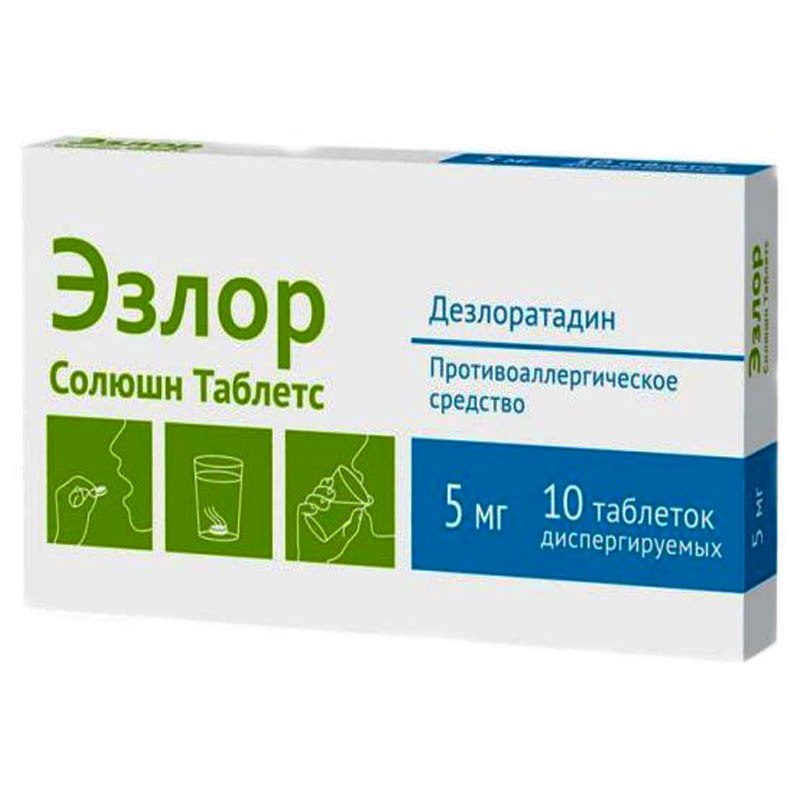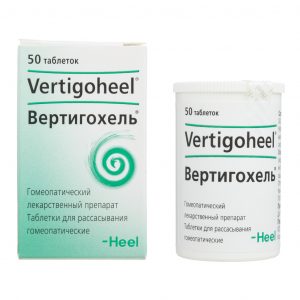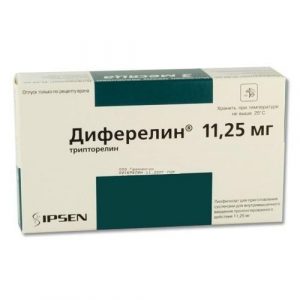Description
Pharmacological action
H1-histamine receptor blocker (long-acting). It is the primary active metabolite of loratadine. It inhibits the cascade of allergic inflammation reactions, including the release of anti-inflammatory cytokines, including interleukins IL-4, IL-6, IL-8, IL-13, the release of pro-inflammatory chemokines (RANTES), the production of superoxide anions by activated polymorphonuclear neutrophils, adhesion echoes and x , isolation of adhesion molecules such as P-selectin, IgE-mediated release of histamine, prostaglandin D2 and leukotriene C4.
Thus, it prevents the development and facilitates the course of allergic reactions, has an antipruritic and antiexudative effect, reduces capillary permeability, prevents the development of tissue edema, smooth muscle spasm.
The drug does not affect the central nervous system, practically does not have a sedative effect (does not cause drowsiness) and does not affect the speed of psychomotor reactions. In clinical and pharmacological studies of the use of desloratadine in the recommended therapeutic dose, there was no prolongation of the QT interval on the ECG.
The action of the drug begins within 30 minutes after ingestion and lasts for 24 hours.
Pharmacokinetics:
Absorption
After oral administration, desloratadine is well absorbed from the gastrointestinal tract, with detectable plasma concentrations of desloratadine being reached within 30 minutes and a maximum concentration after about 3 hours.
Distribution Protein binding accounts for 83-87%. When used in adults and adolescents for 14 days at a dose of 5 mg to 20 mg 1 time / day. there is no clinically significant cumulation of desloratadine. The simultaneous ingestion of food or the simultaneous use of grapefruit juice does not affect the distribution of desloratadine (when taken in a dose of 7.5 mg 1 time / day). Does not cross the blood-brain barrier.
Metabolism
Undergoes extensive metabolism in the liver by hydroxylation to form 3-OH-desloratadine coupled to glucuronide. It is not an inhibitor of CYP3A4 and CYP2D6 isoenzymes and is not a substrate or an inhibitor of P-glycoprotein.
Excretion
Only a small portion of the oral dose is excreted by the kidneys (<2%) and through the intestines (<7%). The elimination half-life is 20-30 hours (on average - 27 hours). Indications – Allergic rhinitis (elimination or relief of sneezing, nasal congestion, mucus discharge from the nose, itchy nose, itching of the palate, itching and redness of the eyes, lacrimation) – urticaria (reduction or elimination of skin itching, rash). Contraindications – Hypersensitivity to desloratadine, other components of the drug or to loratadine, – pregnancy and lactation, – children under 1 year old, – phenylketonuria. Precautions: Severe renal failure. Specific guidance Studies on the effectiveness of desloratadine in rhinitis of an infectious etiology have not been conducted. Impact on the ability to drive transp. Wed and fur .: At the recommended dose, the drug does not affect the ability to drive vehicles or operate machinery. The potential for side effects such as dizziness and drowsiness should be considered. When the occurrence of the described adverse events should refrain from performing these types of activities. Composition Active ingredient: desloratadine – 5.0 mg. Excipients: calcium hydrogen phosphate dihydrate – 170.0 mg microcrystalline cellulose – 50.0 mg carboxymethyl starch sodium – 6.0 mg aspartame – 5.0 mg magnesium stearate – 2.4 mg 1 silicon di silicon 6 mg. Dosage and administration Inside, regardless of the time of meal. The tablet must be dissolved in a small amount of water (10-50 ml or Cup), before use, the solution must be mixed. Adults and adolescents over the age of 12 years – 1 tablet (5 mg) once a day. For children from 6 to 12 years old – 1 tablet (2.5 mg) once a day. Children from 1 year to 6 years – by tablet (1.25 mg – tablets with a dosage of 2.5 mg) 1 time per day. In seasonal (intermittent) allergic rhinitis (in the presence of symptoms lasting less than 4 days a week or less than 4 weeks a year), the course of the disease must be assessed. If the symptoms disappear, the drug should be discontinued, when symptoms reappear, the drug should be resumed. In case of year-round (persistent) allergic rhinitis (in the presence of symptoms lasting more than 4 days a week or more than 4 weeks a year), the drug should be taken during the entire period of exposure to the allergen. To determine the duration of drug therapy, you should consult your doctor. Side effects The incidence of side effects is classified according to the recommendations of the World Health Organization: very often – at least 10% often – at least – 1%, but less than 10% infrequently – at least 0.1%, but less than 1% rarely – not less than 0.01%, but less than 0.1% is very rare – less than 0.01% the frequency is unknown (according to the available data, it is not possible to determine the frequency). On the part of the immune system: very rarely – itching, rash, including urticaria, angioedema, dyspnea, anaphylaxis. From the central nervous system: often – headache, insomnia (in children under 2 years of age) very rarely – dizziness, drowsiness, insomnia, psychomotor hyperactivity, convulsions, hallucinations. From the cardiovascular system: very rarely – tachycardia, palpitations, lengthening of the QT interval. From the gastrointestinal tract: often – dry mouth, diarrhea (in children under 2 years old) very rarely – nausea, vomiting, dyspepsia, diarrhea, abdominal pain, increased activity of liver enzymes, increased concentration of bilirubin, hepatitis. From the musculoskeletal system and connective tissue: very rarely – myalgia. From the skin and subcutaneous tissue: very rarely – photosensitivity. Other: often – increased fatigue, fever (in children under 2 years of age), frequency is unknown – asthenia. Post-registration period Children: frequency unknown – prolongation of the QT interval, arrhythmia, bradycardia. If any of the side effects indicated in the instructions are aggravated, or you notice any other side effects not listed in the instructions, inform your doctor. Overdose Symptoms: taking a dose that is 5 times the recommended dose did not lead to any symptoms. In clinical trials, daily use of desloratadine in adults and adolescents at a dose of up to 20 mg for 14 days was not accompanied by statistically or clinically significant changes in the cardiovascular system. In a clinical-pharmacological study of the use of desloratadine at a dose of 45 mg per day (9 times higher than recommended) for 10 days did not cause an extension of the QT interval and was not accompanied by the appearance of serious side effects. Treatment: in case of accidental ingestion of a large amount of the drug – gastric lavage, intake of activated charcoal if necessary – symptomatic therapy. Desloratadine is not excreted during hemodialysis, the effectiveness of peritoneal dialysis has not been established. Storage conditions In the dark place at a temperature of no higher than 25 ° C. Keep out of the reach of children. Expiration 3 years. Do not use after expiration date. Terms and conditions without prescription dosage form tablets




